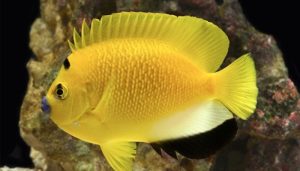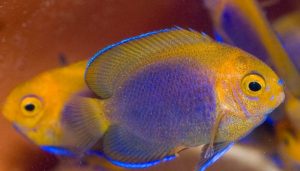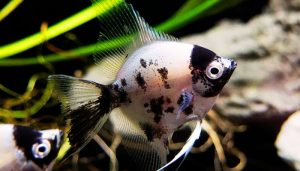Does shrimp eat fish poop? The relationship between shrimp and fish waste is often misunderstood, leading to the myth that shrimp actively consume fish waste in aquariums.
Shrimp are scavengers and will eat a variety of organic materials, including detritus, algae, and decaying plant matter. While they might occasionally consume fish waste (poop), it is not a primary or ideal food source for them.
Fish poop lacks the necessary nutrients to sustain shrimp, and relying on it could lead to malnutrition.
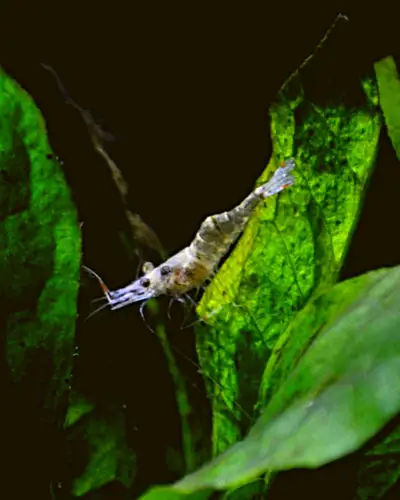
This article aims to clarify the role of shrimp, particularly popular species like cherry shrimp and ghost shrimp, in tank maintenance and waste management.
These tiny crustaceans are visually appealing and are vital in maintaining your tank’s cleanliness. But with so many different types of freshwater shrimp on the market, choosing the right one for your aquarium can be overwhelming.
Understanding their behavior and dietary preferences can help aquarists create a healthier environment for their aquatic pets.
Table of Contents
ToggleDoes Shrimp Eat Fish Poop in Tank?
While shrimp are scavengers that contribute to the cleanliness of a tank, they do not specifically eat fish poop. Instead, shrimp like cherry shrimp and ghost shrimp typically consume leftover fish food, uneaten food, and biofilm that naturally forms in the aquarium.
These shrimp will eat algae and decaying plant matter, which can sometimes include bits of fish waste. However, it’s essential to note that they are not a primary solution for managing fish waste in your tank.
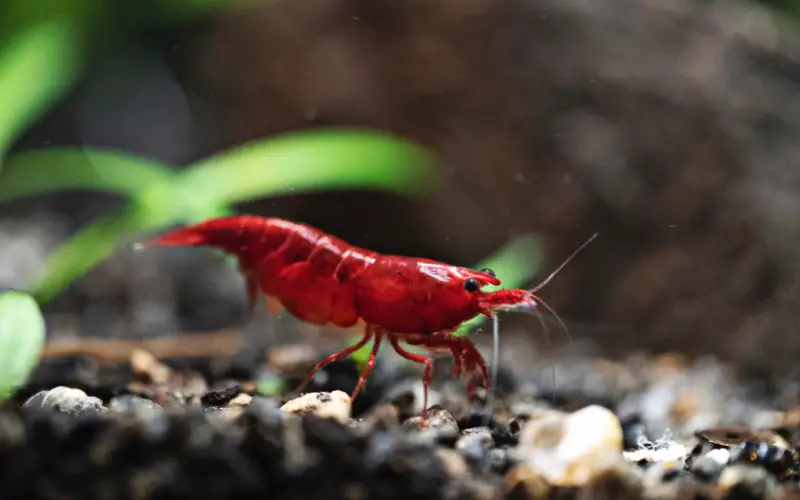
In a well-maintained aquarium, shrimp can help reduce the accumulation of organic waste. They often forage at the bottom of the tank, where they will find various food sources to eat, but their diet should not be solely reliant on fish poop.
Instead, shrimp keepers should provide a balanced diet that includes high-quality shrimp food. Overall, while shrimp may ingest some fish poo incidentally, they are not a dedicated cleanup crew for this purpose.
What Role Do Bottom Feeders And Clean-Up Crews Play In Waste Management?
Bottom feeders, including various species of shrimp, snails, and certain fish, play a crucial role in maintaining a clean aquarium environment. These bottom-dwelling creatures help manage waste by consuming leftover food and organic debris.
For instance, ghost shrimp and amano shrimp are excellent at scavenging for uneaten fish food and biofilm that can accumulate on the substrate. Their presence in a planted tank can help keep the environment clean and reduce the need for frequent cleaning.
However, it’s essential to remember that while these bottom feeders assist in waste management, they cannot replace proper tank maintenance practices. Regular water changes and careful monitoring of fish waste levels are still necessary.
The combination of a clean-up crew and diligent maintenance practices will ensure that your aquarium remains a healthy habitat for all aquatic life. Shrimp keepers should also be aware of the limitations of relying solely on shrimp and other bottom feeders to manage waste effectively.
How Often Should You Clean Fish Poop From Your Aquarium?
The frequency of cleaning fish waste from your aquarium depends on several factors, including the size of your tank, the number of fish, and the presence of live plants. Generally, it is recommended to conduct partial water changes and remove visible waste at least once a week.
This helps maintain a stable environment for your fish and shrimp while preventing the buildup of harmful toxins. Additionally, using a gravel vacuum can efficiently remove debris and fish waste from the substrate during water changes.
Neglecting to clean fish poop regularly can lead to poor water quality, which can harm the health of your aquatic pets. Overfeeding can exacerbate the problem, as uneaten food contributes to waste accumulation.
Therefore, it’s essential for shrimp keepers and fish enthusiasts alike to establish a routine for cleaning and maintenance. By doing so, you will create a thriving ecosystem in your aquarium, where both your fish and shrimp can flourish.
What Are The Benefits Of A Good Filtration System For Waste Removal?
A good filtration system is vital for effective waste management in any aquarium. Filters not only remove visible debris but also help break down organic waste through beneficial bacteria, supporting a healthy nitrogen cycle.
This process is crucial for keeping the water parameters stable and ensuring that harmful ammonia and nitrite levels remain low. A well-functioning filter can dramatically improve the overall health of your aquarium, benefiting both fish and shrimp.
Additionally, a good filtration system can enhance the oxygen levels in the water, which is essential for the survival of aquatic life. Shrimp, in particular, thrive in oxygen-rich environments, and a quality filter can aid in maintaining these conditions.
Regularly maintaining your filter, such as cleaning or replacing filter media, is also necessary to ensure optimal performance. In summary, investing in a proper filtration system combined with regular maintenance can lead to a cleaner and healthier aquarium.
How Does Regular Maintenance Help In Managing Fish Waste?
Regular maintenance is critical for managing fish waste effectively in your aquarium. By conducting routine tasks like water changes, substrate cleaning, and filter maintenance, you can help keep fish waste levels in check and maintain a healthy environment for your aquatic inhabitants.
Regular water changes dilute toxins that accumulate in the tank, ensuring that both fish and shrimp thrive. Furthermore, cleaning the substrate prevents the buildup of organic matter, which can lead to harmful spikes in ammonia and nitrite levels.
In addition to promoting a healthier environment, consistent maintenance practices allow shrimp keepers to monitor the overall condition of the tank. This includes observing changes in water chemistry and the health of plants and fish.
By staying proactive with maintenance, you can address any issues before they escalate, ensuring a balanced ecosystem. Therefore, regular maintenance is not just beneficial; it is essential for supporting the health and wellbeing of all aquarium inhabitants.
How To Use A Gravel Vacuum To Remove Fish Poop?
Using a gravel vacuum is a straightforward process that can significantly enhance the cleanliness of your aquarium. To begin, ensure that you have a suitable gravel vacuum for your tank size, typically one that matches the substrate depth.
Start by siphoning water from the tank, allowing the vacuum to draw up fish poop and debris while leaving the gravel in place. Move the vacuum over the substrate, focusing on areas where waste tends to accumulate, such as under decorations or plants.
As you vacuum, it’s essential to be mindful of the gravel and other substrates. The vacuum should effectively remove waste without disturbing too much of the substrate, as this can lead to cloudiness in the water. Additionally, consider doing this process during a water change to maintain water quality.
Overall, using a gravel vacuum regularly will help keep your aquarium clean, reducing the burden of fish waste and promoting a healthier environment for your shrimp and fish.
Conclusion
So, does shrimp eat fish poop? In conclusion, while freshwater shrimp contribute to the cleanliness of an aquarium, they do not specifically eat fish poop. Instead, their scavenging behavior is more focused on consuming leftover fish food, algae, and biofilm. To maintain a healthy tank environment, it is essential for shrimp keepers to implement regular cleaning routines, adequate filtration, and appropriate feeding practices. Understanding the true role of shrimp in waste management will lead to better aquarium care and healthier aquatic life.
Top Posts
- Do Shrimp Need a Heater: 3 Surprising Benefits of Warm Water
- Ghost Shrimp Female Vs Male: 7 Key Differences You’ll love
- Why Does Ghost Shrimp Turning Brown – 5 Causes & Treatments
- Can Ghost Shrimp Survive with Bettas (6 Tips for Peaceful Tank)
- How Big Will Ghost Shrimp Get: Let’s Clear Up the Confusion!
- Are Shrimp Bottom Feeders: 5 Alarming Facts Revealed!
- Are Ghost Shrimp Neocaridina the Ultimate 10X Color Boosters
- Can Ghost Shrimp Live Without a Filter: (The Shocking Truth)
- What Do Shrimp Eat: 4 Essential Feeding Habits & Tips!
- Ghost Shrimp Vs Amano: A Comprehensive Comparison
- Ghost Shrimp Compatible Tank Mates: The 10 Best (And Worst) Choices
- Ghost Shrimp Dead: 1 Remarkable Molting Comeback!
- Will Ghost Shrimp Eat Snails: The Answer Might Surprise You!
- Cherry Shrimp and Betta Fish: 5 Explosive Tips for Harmony!
- Are Ghost Shrimp Nocturnal: The Answer Might Surprise You!


